Experience the Grandeur of Nanjing Presidential Palace: Why It Should Be on Your Travel Itinerary
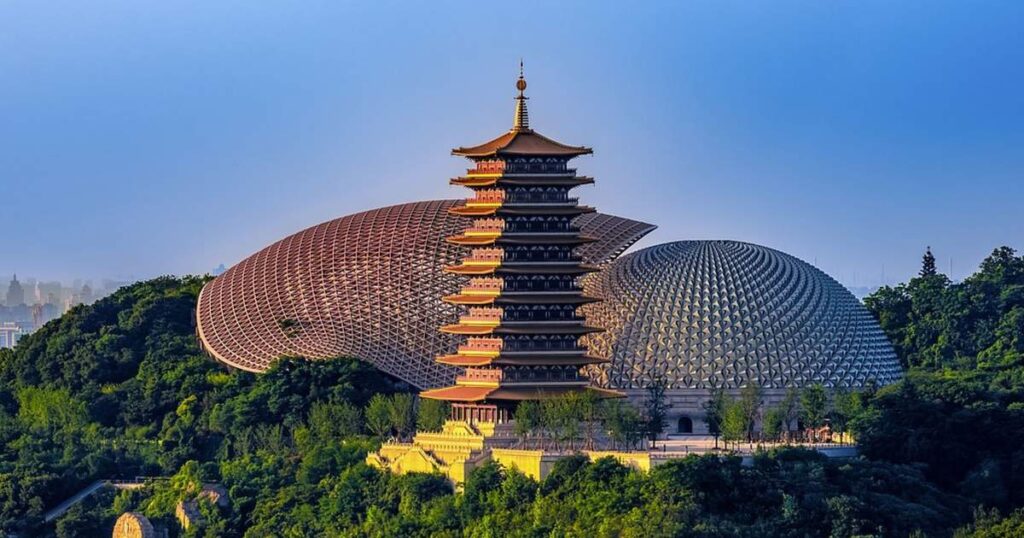
An Essential Guide to Visiting Nanjing Presidential Palace
Step into the heart of Nanjing, and you’ll find yourself at the majestic Nanjing Presidential Palace, a site that echoes the whispers of history and power. This sprawling compound is not only an architectural marvel but also a tapestry woven with the threads of China’s transformative 20th century. As the former headquarters of the Republic of China, it served as a stage for pivotal events that shaped modern China, most notably under the leadership of Sun Yat-sen, the country’s founding father.
In this guide, we will delve into the rich heritage of the Nanjing Presidential Palace, exploring its stunning gardens, exquisite architecture, and the significant historical narratives that resonate within its walls. Whether you’re a history enthusiast eager to learn about the Taiping Kingdom or simply looking to enjoy a peaceful stroll through its landscaped grounds, this guide will ensure you make the most of your visit. We’ll also cover practical tips for navigating the site, highlight nearby attractions, and recommend dining options to enhance your experience in this vibrant city. Prepare to be captivated by the stories that linger in the air, as you embark on an unforgettable journey through one of China’s most important historical landmarks.
In This Guide
- An Essential Guide to Visiting Nanjing Presidential Palace
- The Rich History and Legends of Nanjing Presidential Palace
- Main Highlights: What You Absolutely Can’t Miss
- Planning Your Visit: A Practical Guide
- Tickets: Prices, Booking, and Tips
- How to Get There: A Complete Transportation Guide
- Local Cuisine and Accommodation Nearby
- Frequently Asked Questions
- Final Thoughts on Your Trip
The Rich History and Legends of Nanjing Presidential Palace
A Tapestry of Time: The Nanjing Presidential Palace
The Nanjing Presidential Palace, a grand symbol of China’s tumultuous history, is not just an architectural marvel but also a repository of stories, legends, and pivotal events that shaped the nation. From its origins to its role in modern China, the palace stands as a testament to the resilience and evolution of Chinese governance.
The Beginnings: A Seat of Power
The site of the Nanjing Presidential Palace has long served as a center of authority. Originally constructed in the early 15th century during the Ming Dynasty, it began as the residence of the governor of Jiangsu province. However, its significance skyrocketed during the 19th century, especially when Nanjing was established as the capital of the Taiping Heavenly Kingdom (1851-1864), a radical political entity led by Hong Xiuquan. Under his reign, the palace was transformed into a pivotal stronghold, and it was here that Hong proclaimed his ambitions for a new China.
The Republic Era: Sun Yat-sen’s Vision
Fast forward to the early 20th century, the palace gained further prominence following the fall of the Qing Dynasty in 1911. Sun Yat-sen, the founding father of the Republic of China, made this palace his official residence in 1912. His vision for a modern Chinese state began to take shape here, and it was during this period that the palace became a symbol of hope and renewal for a nation eager to embrace change.
Sun Yat-sen’s influence is deeply embedded in the palace’s architecture and gardens, which reflect his ideals of democracy and progress. Visitors can explore the serene gardens that surround the main buildings, where Sun envisioned a harmonious balance between nature and governance.
The Struggles and Triumphs of the 20th Century
As China entered a period of conflict and upheaval, the Nanjing Presidential Palace witnessed dramatic events that would alter its destiny. During the Sino-Japanese War, the palace served as the headquarters for the Nationalist government under Chiang Kai-shek. The building became a hub for decision-making as China faced external threats and internal strife.
Legend has it that on the eve of the infamous Nanjing Massacre in 1937, Chiang Kai-shek held a secret meeting within the palace walls to strategize on the defense of the city. The ensuing tragedy left an indelible mark on both the palace and the city, intertwining their fates with the scars of war.
Restoration and Modern Significance
Despite its turbulent past, the Nanjing Presidential Palace has undergone restoration and transformation, now serving as a museum that draws visitors from around the world. It offers a glimpse into China’s complex history through exhibitions and artifacts, including remnants from the Republic era and the Taiping Kingdom.
Today, the palace stands not just as a historical site but as a venue for cultural events and diplomatic gatherings, bridging the past with the present. It embodies the spirit of resilience, showcasing how a place steeped in conflict can evolve into a symbol of peace and unity.
Legends and Lore: A Living History
Among the many legends surrounding the Nanjing Presidential Palace is the tale of the “Blue Dragon of Nanjing.” According to local lore, a mythical blue dragon once roamed the palace grounds, symbolizing protection and prosperity. It is said that during times of trouble, the dragon would appear to guide leaders in their decisions, ensuring the safety and welfare of the people.
These legends, coupled with the rich history of the palace, create an enchanting narrative that captivates visitors. As you walk through the hallowed halls and pristine gardens, you can almost hear the whispers of history echoing through time.
Conclusion: A Journey Through Time
The Nanjing Presidential Palace is more than a mere monument; it is a living testament to the resilience of the Chinese spirit and the complexities of its history. Whether you are captivated by its architectural beauty, intrigued by its legends, or moved by its historical significance, a visit to this remarkable site offers an unforgettable journey through the annals of time.
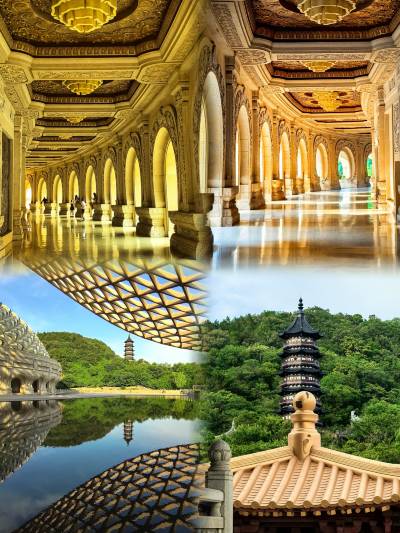
Nanjing Presidential Palace.
Main Highlights: What You Absolutely Can’t Miss
The Presidential Palace Gardens
As you step into the sprawling grounds of the Nanjing Presidential Palace, the exquisite gardens offer a serene escape from the bustling city. The lush greenery, adorned with traditional Chinese landscaping, creates a picturesque setting perfect for a leisurely stroll. Make sure to wander through the various plant species and find a quiet spot to soak in the beauty of your surroundings. Tip: Visit early in the morning or late in the afternoon for the best light and a more tranquil atmosphere.
The Main Hall
The Main Hall, known as the “Zhonghua Hall,” is a stunning architectural marvel that serves as the centerpiece of the palace. With its grand columns and intricate decorations, this hall reflects the elegance of the Republic era. Inside, you can admire exhibitions highlighting the significant historical events that unfolded within these walls. Tip: Grab an audio guide to enrich your understanding of the hall’s history and its role in modern Chinese politics.
Sun Yat-sen Memorial Hall
This dedicated space honors the founding father of modern China, Dr. Sun Yat-sen. The memorial hall is adorned with photographs and artifacts that celebrate his life and contributions to the nation. The atmosphere is both respectful and inspiring, making it a must-visit for history enthusiasts. Tip: Don’t miss the chance to take a moment of reflection in front of his statue, which conveys the profound impact he had on the country.
The Historical Exhibition Hall
Step into the Historical Exhibition Hall to delve deeper into the rich tapestry of China’s past. This area showcases artifacts, documents, and multimedia displays that capture the essence of Nanjing’s historical significance, particularly during the 20th century. Tip: Allocate at least an hour here; the depth of information is extensive, and you’ll want to absorb it all!
The Presidential Office Area
Explore the original office area of the presidential staff, where decisions that shaped the nation were made. The vintage furniture and decor provide a glimpse into the historical significance of this space. As you walk through, imagine the political discussions that took place here. Tip: Look for the preserved items that date back to the early Republic period, offering an authentic insight into governmental operations of the time.
The Taiping Kingdom Pavilion
This pavilion commemorates the Taiping Heavenly Kingdom, an important period in Nanjing’s history. The architectural style reflects the unique cultural fusion of that era, making it a fascinating stop. Inside, you will find exhibits detailing the Taiping Rebellion and its impact on Chinese society. Tip: Be sure to read the stories of key figures involved in this tumultuous period to fully appreciate its historical context.
The East Garden
Last but not least, don’t miss the East Garden, where the beauty of nature and history intertwine. This tranquil garden is dotted with traditional pavilions and ponds, providing a perfect backdrop for photographs. It’s an ideal spot to unwind after exploring the palace’s more intense historical narratives. Tip: Bring a sketchbook or camera; the scenery is incredibly photogenic, especially during cherry blossom season!
By exploring these highlights, you will gain a comprehensive understanding of the Nanjing Presidential Palace and its vital role in China’s historical landscape. Whether you’re a history buff or simply looking for a beautiful place to visit, this site promises an enriching experience.
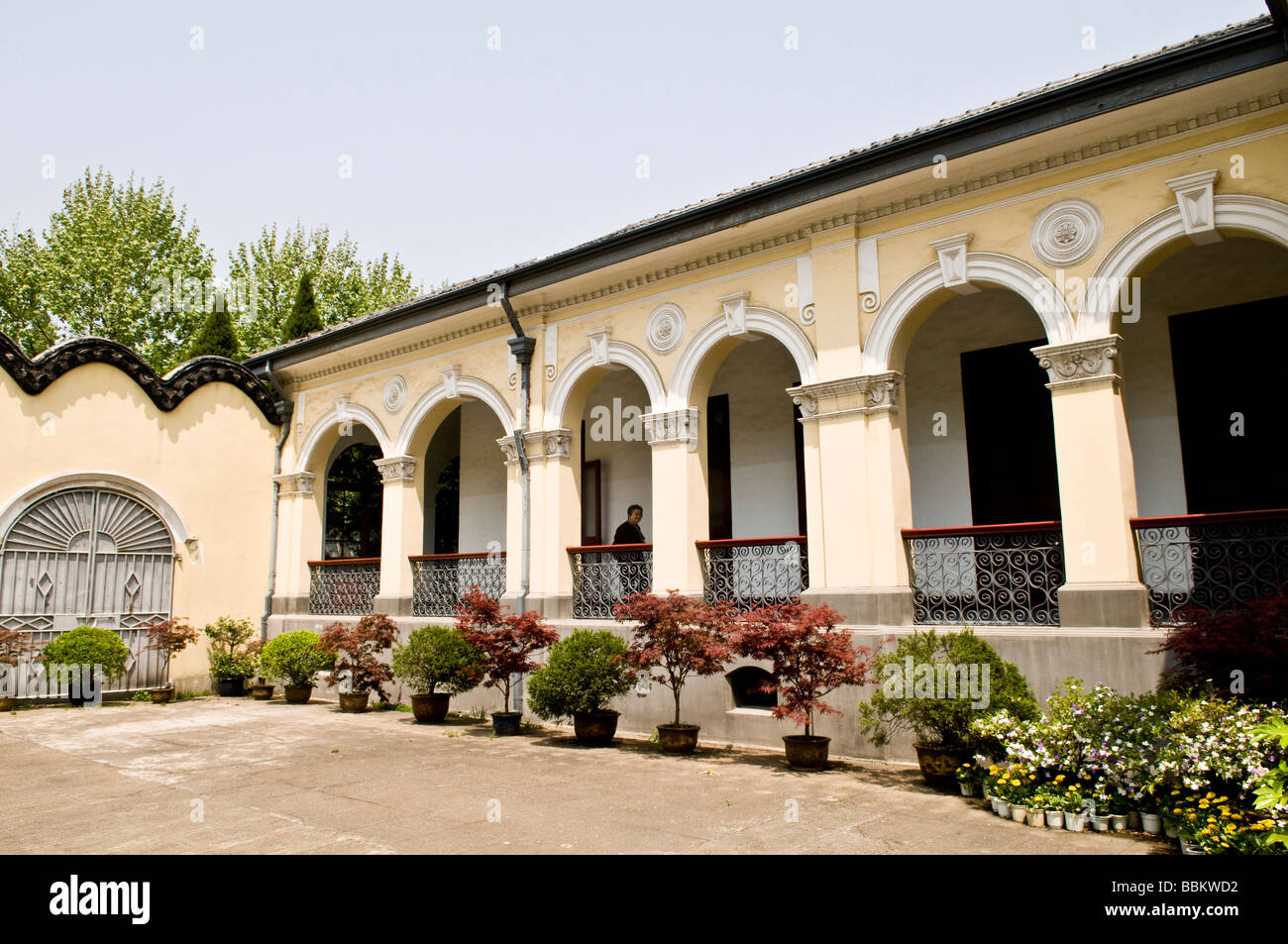
Nanjing Presidential Palace.
Planning Your Visit: A Practical Guide
Best Time to Visit
The Nanjing Presidential Palace is open year-round, but the ideal time to visit is during the spring (March to May) and autumn (September to November) months. During these seasons, the weather is mild and pleasant, making it perfect for exploring the expansive grounds and gardens. Additionally, spring showcases beautiful blossoms, while autumn offers stunning foliage, enhancing the picturesque scenery of the palace.
Recommended Itinerary
To make the most of your visit to the Presidential Palace, consider the following itinerary:
-
Morning Exploration (9:00 AM – 12:00 PM): Arrive early to beat the crowds. Begin your tour at the main entrance and spend time exploring the main halls and exhibitions. Don’t miss the historical artifacts related to Sun Yat-sen and the 20th-century history of China.
-
Lunch Break (12:00 PM – 1:00 PM): After your morning exploration, enjoy lunch at one of the nearby eateries. There are several restaurants offering a variety of cuisines within a short walking distance.
-
Afternoon Stroll (1:00 PM – 3:00 PM): Dedicate your afternoon to the beautiful gardens surrounding the palace. The landscaped areas are perfect for a leisurely stroll and provide an excellent backdrop for photography.
-
Cultural Insights (3:00 PM – 5:00 PM): Before you leave, take time to visit the nearby attractions, such as the Ming City Wall or the Confucian Temple Area, which are rich in history and culture.
Photography Tips
- Golden Hour: The best time for photography is during the golden hour (shortly after sunrise or before sunset) when the light is soft and warm, enhancing the beauty of the palace and its gardens.
- Wide-Angle Shots: The expansive grounds offer excellent opportunities for wide-angle shots. Capture the grandeur of the buildings alongside the lush gardens.
- Details Matter: Be sure to take close-up photos of intricate architectural details, such as carvings and the unique design elements found throughout the palace.
- People in Frames: Including people in your shots can provide a sense of scale and context, showcasing the vibrant atmosphere of the site.
What to Wear
Comfortable footwear is a must, as you will be walking and exploring the large grounds. Dress in layers to accommodate changing temperatures throughout the day, especially if you plan to stay for the evening. Sunglasses and a hat are advisable during the warmer months to protect against the sun. If you plan to visit any religious sites nearby, consider wearing modest clothing.
Insider Tips
-
Plan for Weekdays: If possible, visit on a weekday to avoid larger crowds typically seen on weekends. This will allow for a more intimate experience of the historical site.
-
Free Audio Guides: Check if the palace offers free audio guides or mobile apps for self-guided tours. These resources can enhance your understanding of the history and significance of various exhibits.
-
Bring Snacks and Water: While there are dining options nearby, having snacks and water on hand can be helpful, especially if you plan to spend several hours exploring the grounds.
-
Explore Nearby Attractions: Don’t limit your visit to just the palace. The surrounding area is rich with cultural landmarks, such as the Nanjing City Wall and the Confucian Temple, which are easily accessible.
-
Check for Special Events: Keep an eye on the palace’s official website or visitor information for any special exhibitions or events that may coincide with your visit, offering a unique experience that goes beyond the usual tour.
By following this practical guide, you’re sure to have a memorable visit to the Nanjing Presidential Palace, immersing yourself in the rich history and culture of this significant site.

Nanjing Presidential Palace.
Tickets: Prices, Booking, and Tips
Visiting the Nanjing Presidential Palace is a fascinating journey through China’s rich history, particularly significant during the 20th century. To enhance your experience, here’s a comprehensive overview of ticket prices, booking options, and some helpful tips for your visit.
Ticket Information
| Ticket Type | Price (CNY) | Includes |
|---|---|---|
| Adult Ticket | 40 | Access to the main palace and gardens |
| Student Ticket | 20 | Access to the main palace and gardens |
| Senior Ticket | 20 | Access to the main palace and gardens |
| Group Ticket (10+) | 300 | Access for up to 10 people, discounts apply |
| Audio Guide Rental | 20 | Available in multiple languages |
How to Book
Tickets for the Nanjing Presidential Palace can be purchased on-site at the entrance. However, to avoid long queues and ensure availability, especially during peak tourist seasons, it is advisable to book your tickets in advance. You can do this through various travel websites or directly on the official Nanjing tourist information site.
Booking Tips:
- Advance Booking: Secure your tickets at least a few days prior to your visit. This allows you to choose a time slot that best fits your itinerary.
- Group Discounts: If you are traveling with a group, inquire about group ticket rates to save on costs.
- Audio Guides: Consider renting an audio guide to enrich your understanding of the historical significance of the palace and its grounds.
By planning ahead, you can ensure a smooth and enriching experience at the Nanjing Presidential Palace, making the most of your visit to this historic site!
How to Get There: A Complete Transportation Guide
From the Nearest Major City
Arriving from Shanghai
If you’re traveling from Shanghai to Nanjing, the best option is to take a high-speed train. The journey takes approximately 1.5 to 2 hours.
- Train Service:
- Type: G-train (high-speed)
- Departure Station: Shanghai Hongqiao Railway Station
- Arrival Station: Nanjing South Railway Station
- Cost: Approximately ¥200-¥400 (about $30-$60) depending on the class of service.
Once you arrive at Nanjing South Railway Station, you can transfer to the metro or take a taxi to reach the Presidential Palace.
Arriving from Beijing
For those coming from Beijing, a high-speed train is also the most efficient option.
- Train Service:
- Type: G-train
- Departure Station: Beijing South Railway Station
- Arrival Station: Nanjing South Railway Station
- Cost: Approximately ¥400-¥700 (about $60-$100).
- Duration: Approximately 3.5 to 4 hours.
Upon arrival, follow the same transfer options as mentioned above to reach the Presidential Palace.
Getting to the Presidential Palace
From Nanjing South Railway Station
- By Metro:
- Line: Take Line 1 (the red line) towards Mokou.
- Transfer: At Xinjiekou Station, transfer to Line 2 (the purple line) towards Nanjing Massacre Memorial Hall.
- Get Off: Disembark at Zhonghuamen Station and take a short walk to the Presidential Palace.
- Total Travel Time: Approximately 40 minutes.
-
Metro Cost: Around ¥6 (about $1).
-
By Taxi:
- Duration: Approximately 30 minutes.
- Cost: About ¥80-¥100 (approximately $12-$15) depending on traffic.
From Nanjing Lukou International Airport
- By Airport Shuttle Bus:
- Line: Take the Airport Bus to Nanjing South Railway Station.
- Duration: Approximately 40-50 minutes.
-
Cost: Around ¥30 (about $5).
-
By Taxi:
- Duration: Approximately 45 minutes.
- Cost: Ranges from ¥150-¥200 (about $22-$30).
Getting Around the Scenic Area
The Nanjing Presidential Palace is located in a large historical compound that includes gardens and exhibition areas. Here are your options for exploring the area:
- Walking:
-
The Presidential Palace is designed for pedestrians, offering beautiful gardens and pathways. A leisurely walk allows you to fully immerse yourself in the stunning surroundings.
-
Bicycles:
-
Bicycle rentals are available nearby. Cycling through the scenic areas can be a delightful way to explore at your own pace.
-
Guided Tours:
-
Consider joining a guided tour for a more in-depth understanding of the history and significance of the site. Tours typically last 1-2 hours and provide valuable insights.
-
Public Transport:
- If you plan to visit nearby attractions like the Nanjing Massacre Memorial Hall or the Ming City Wall, local buses and metro services are convenient and economical options.
Useful Tips
- Opening Hours: The Presidential Palace is open daily from 7:30 AM to 6:30 PM. Aim to arrive early to avoid crowds.
- Tickets: Entrance to the complex is typically free, but certain exhibition areas may charge a small fee.
- Language: While some staff may speak English, having a translation app can be helpful for navigating and understanding signs.
With this guide, you’re now equipped with all the information needed to reach and explore the historical Nanjing Presidential Palace! Enjoy your journey through time in this remarkable location.
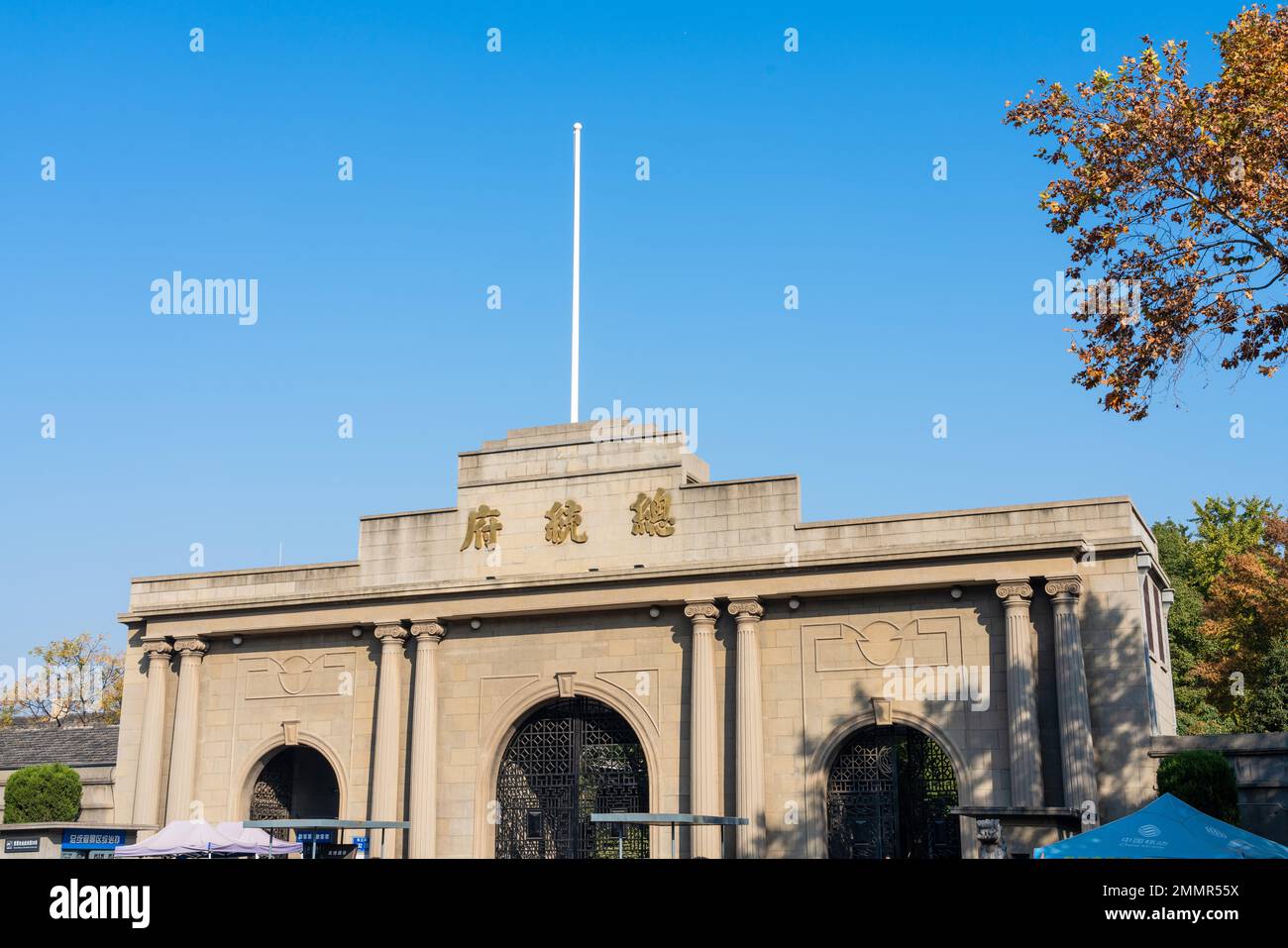
Nanjing Presidential Palace.
Local Cuisine and Accommodation Nearby
When visiting the Nanjing Presidential Palace, take the opportunity to immerse yourself in the local flavors and find the perfect place to rest after a day of exploration.
Culinary Delights
Nanjing is renowned for its rich culinary traditions, offering a variety of dishes that reflect the region’s unique heritage:
-
Nanjing Salted Duck (南京盐水鸭)
A beloved local specialty, this dish features tender duck seasoned with a blend of salt and spices, often served cold. The flavorful meat and succulent texture make it a must-try for any visitor. -
Duck Blood Soup (鸭血粉丝汤)
A comforting bowl of soup that combines duck blood, vermicelli noodles, and various greens, all simmered in a savory broth. This dish not only warms the soul but also showcases the local affinity for duck-based ingredients. -
Nanjing-style Dumplings (南京水饺)
These delicate dumplings are typically filled with a mixture of pork and vegetables, steamed or boiled to perfection. Served with a tangy dipping sauce, they make for a delightful snack or meal. -
Qinhuai River Fish (秦淮河鱼)
Freshwater fish from the Qinhuai River is often grilled or steamed and served with a light sauce. The dish highlights the importance of the river in Nanjing’s culinary landscape and is best enjoyed with a side of local rice.
Accommodation Options
Whether you’re seeking luxury, a boutique experience, or budget-friendly stays, Nanjing has something for everyone:
-
Luxury:
InterContinental Nanjing
Located in the heart of the city, this five-star hotel boasts stunning views of the Yangtze River. With luxurious rooms, a spa, and multiple dining options, it’s perfect for travelers who want to indulge in comfort and elegance. -
Boutique:
The Grand Mansion, Nanjing
This charming boutique hotel features a blend of modern amenities and historical architecture. Guests can enjoy personalized service and a unique ambiance that reflects the cultural heritage of Nanjing. -
Budget:
7 Days Inn Nanjing Presidential Palace
For travelers on a budget, this no-frills hotel offers clean and comfortable accommodations at an affordable price. Its proximity to the Presidential Palace and public transport makes it a convenient option for exploring the city. -
Hostel:
Nanjing Wutaishan Youth Hostel
A great choice for backpackers and solo travelers, this hostel fosters a social atmosphere with shared dorms and private rooms. Enjoy the communal kitchen and lounge areas, perfect for meeting fellow travelers.
By savoring local dishes and selecting the right accommodation, you can enhance your experience at the historic Nanjing Presidential Palace and truly connect with the city’s vibrant culture.
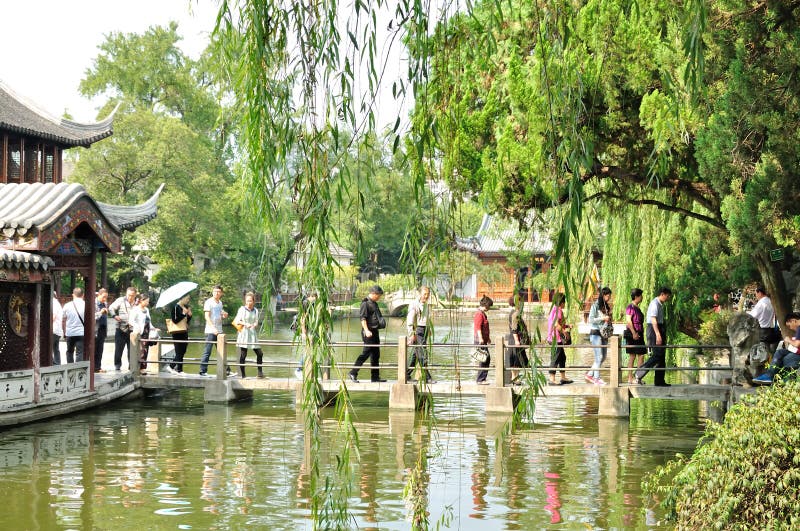
Nanjing Presidential Palace.
Frequently Asked Questions
Frequently Asked Questions about Nanjing Presidential Palace
-
Is the Nanjing Presidential Palace suitable for children and the elderly?
Yes, the Nanjing Presidential Palace is generally suitable for both children and elderly visitors. The palace grounds are spacious and offer plenty of room for walking. However, some areas may have uneven surfaces, so it’s advisable for elderly visitors to wear comfortable shoes. Additionally, children will find the history and gardens fascinating, making it an educational experience for all ages. -
Are there English signs and guides available?
Yes, there are English signs throughout the palace grounds to help international visitors navigate and understand the historical significance of various areas. Audio guides in English may also be available for rental, providing detailed information about the palace’s history. -
How much time should I plan to spend at the palace?
Visitors typically spend about 1.5 to 2.5 hours exploring the Nanjing Presidential Palace. This allows time to appreciate the gardens, exhibitions, and historical buildings. If you are particularly interested in Chinese history or wish to take your time, consider dedicating up to three hours. -
What are the opening hours of the Nanjing Presidential Palace?
The palace is open daily from 7:30 AM to 6:30 PM. Last entry is usually around 5:30 PM, so plan your visit accordingly to enjoy the entire experience. -
Is there an entrance fee?
Yes, there is an entrance fee to visit the Nanjing Presidential Palace. The fee is modest, but prices can vary, so it’s advisable to check the official website or inquire upon arrival for the latest information. -
How do I get to the Nanjing Presidential Palace?
The palace is easily accessible via public transportation. You can take the metro to the nearest station, which is a short walk away. Buses and taxis are also convenient options. Detailed directions can be found on local travel apps or maps. -
Are there any dining options nearby?
Yes, there are several dining options within a short walking distance from the palace. You can find a variety of restaurants offering local and international cuisine, making it easy to enjoy a meal before or after your visit. -
Can I take photos inside the palace?
Photography is generally allowed in the outdoor areas of the Nanjing Presidential Palace. However, some indoor exhibits may have restrictions, so be sure to look for signs indicating whether photography is permitted in those areas.
Final Thoughts on Your Trip
As you conclude your visit to the Nanjing Presidential Palace, take a moment to reflect on the rich tapestry of history that unfolds within its expansive grounds. This site, once the heart of political power and revolutionary fervor, offers not just a glimpse into China’s past but also a profound connection to the ideals of democracy and national identity championed by figures like Sun Yat-sen.
Stroll through the beautifully landscaped gardens, where the whispers of history mingle with the rustling leaves, creating a serene backdrop for contemplation. Each corner of the palace compound tells a story, from the grandeur of its architecture to the echoes of significant events that shaped a nation.
As you leave, carry with you not only the memories of what you’ve seen but also an appreciation for the resilience of the human spirit. The Nanjing Presidential Palace stands as a testament to the enduring quest for progress and understanding. Embrace this spirit as you continue your travels, and let it inspire you to seek out stories and experiences that deepen your connection to the world around you. Safe travels!